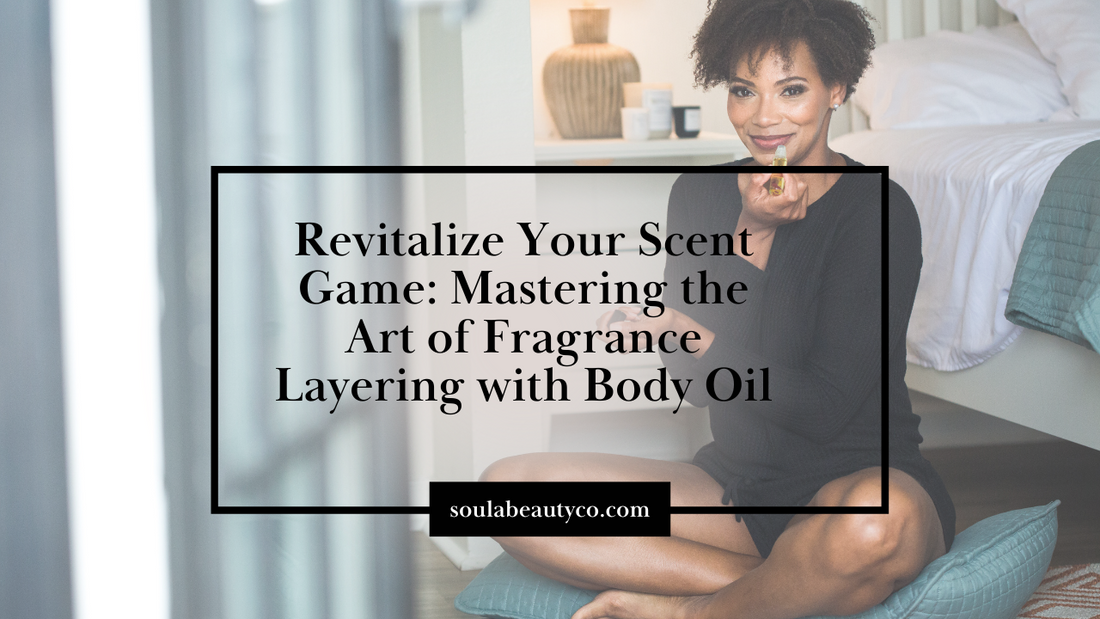Layering Fragrances
I'm sure you've seen people talk about how they layer their perfumes or fragrances before going out, but do you know why they do that? Sure, it can be great for creating your own "signature scent," but it can also help your fragrances last longer, and when you use body oil or butter, you're also getting the benefit of the plant ingredients themselves.
Here's why it works...
From our previous posts, we know that the ingredients in many body oils contain emollients that absorb into your skin to provide hydration, protection, and nourishment.
Additionally, essential fatty acids create a smooth canvas so fragrance "sticks" to the skin in an even fashion (it creates an anchor the fragrance can hold onto). Now, let's walk through how to effectively layer your skincare products and your fragrance.
Pick an unscented product if you're starting.
If you already have a product that works well for you, you can use that.
If you attempt to start with a fragranced product without knowing the type of "scentscape" you want to create, it can go bad...real bad.
Apply the Oil
Once you shower, apply your body oil (focus on your wrists, neck, and chest area). Use gentle strokes to apply the oil, and remember that you are also giving yourself a nice massage to get blood and lymphatic fluid moving. Note that this practice has been conducted through Ayurvedic/Traditional Chinese Medicine practices for centuries. Applying warm oil to the body before bathing was often performed for health (Madhukar et al. 2018).
Let it Soak In!
Apply the body oil first and allow it to absorb for at least three to five minutes before applying a fragrance. Then, use your fragrance and focus on your neck, wrists, and chest. If you decide to layer multiple products, less is more. I do not recommend using multiple base note fragrances to start. This method suits top notes, such as citrus or light floral scents, as they evaporate quickly. You can also add a small amount of body oil to the fragrance once you've added it.
Now You Can Build an Accord
Once you have gotten more comfortable with your fragrance, you can begin to experiment with different notes within a fragrance accord (if you're thinking this sounds like music, yes...fragrance and music accords are similar). You can create your "signature scent" using base, middle, and top note scents. Examples of this include:
Top (These grab your attention): Orange, Berries, Bergamot
Middle (These are the center of your fragrance that you will likely smell): Lavender, Geranium, Rose
Base (These will form the "base" or the final aspect of the scent): Cedarwood, Vetiver, Ginger, Sandalwood, Frankincense, Vanilla
Of course, everyone is different, but this can be a start to having more fun with your fragrances.
Reference
Madhukar, L. S., Nivrutti, B. A., Bhatnagar, V., & Bhatnagar, S. (2018). Physio-anatomical explanation of abhyanga: An ayurvedic massage technique for healthy life. Journal of Traditional Medicine & Clinical Naturopathy.
